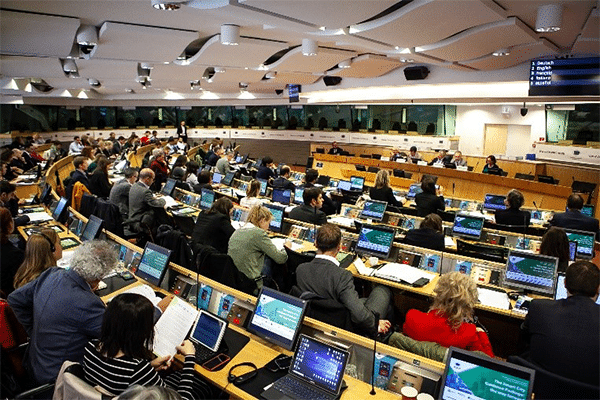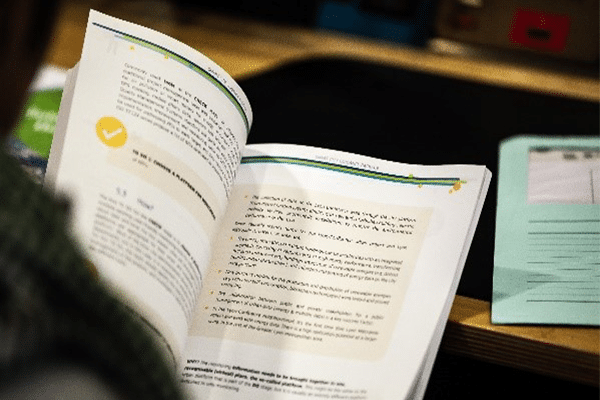Join JPI UE
Faq
FAQ
Please click here for the frequently asked questions we collected.
If you have an additional questions you are welcome to mail us at info@jpi-urbaneurope.eu
The Smart City Guidance Package looks at integrated planning and management of smart city and low energy district projects predominantly through the eyes of cities’ strategists, experts and project managers. It provides insight into obstacles frequently met during implementation and explores what it takes to scale up and replicate. The wealth of urban data, increased connectivity, the Internet-of-Things (IoT), advanced ICT and energy and mobility technologies, have opened new avenues for urban transitioning. Across Europe and beyond, urban areas are looking into this potential, experimenting in living labs and applying smart technologies in ambitious integrated projects. The Smart City Guidance Package takes action and steps forward to foster a long-term perspective to these developments, in a truly integrated way for smart city efforts to be sustainable in more ways than the technical. It has, up until now, the “how to” in realizing such long-term perspectives has not been obvious. This is why the Smart City Guidance Package guides ways forward for implementing more inclusive participatory processes, innovative business models and improved collaboration across traditional policy- and administrative boundaries.

The Smart City Guidance Package has been built upon the experiences of nearly 100 organisations active in Europe in the field of smart cities, in different stages of maturity. It brings together best practices in a streamlined way, based on an extension of the familiar policy cycle: Vision-Decide-Plan-Do-Check-Act-Replicate, and is fully aligned with related ISO standards. For each stage, the guide explains what are the to do’s, an illustrates this with examples of best practices, but it also explains why these best practices are advocated and which pitfalls are avoided in that way. The roadmap was tested in five European cities: Santa Cruz de Tenerife, Sofia, Vaasa, Brno, and Parma.
Judith Borsboom-van Beurden, Senior Researcher on Smart Sustainable Cities at the Norwegian University of Science and Technology (NTNU) is the main contributor to this publication. Borsboom-van Beurden is also the chair of the Urban Europe Research Alliance (UERA), one of the key initiatives of JPI Urban Europe, currently bringing together 53 European research organisations from 18 different countries. She says the following about the expected impact and value of the Smart City Guidance Package in the future:
“The Smart City Guidance Package is meant as a source of inspiration and orientation for city administrations who want to become more active in the field of smart cities or want to pursue their ambitions in a more structured way. It is not so much about technologies, as about organizing the “soft shell” around these smart city solutions. In the Action Cluster for Integrated Planning, Policies and Regulation, we saw, despite many very good repositories about smart city solutions, such as the Smart City Information System, there was a need for an easy accessible entry point for city administrations to the world of smart cities, something like a “smart city guide for dummies”. Even though that sounds like a contradiction, it is not easy to find the right information about how to set up such a process, and where to start, especially not for time-pressured staff of city administrations. So far, we got very enthusiastic reactions, even of cities which are already quite advanced in the field of smart cities. In future, we hope to make an integration of the Smart City Guidance Package with the Smart City Information Systems, which consolidates the knowledge and experiences of many European smart city and energy-efficient district plans from CONCERTO and Horizon2020 Lighthouse projects. Probably in the form of a WIKI, with elements of serious gaming and profiling to guide people as soon as possible to the information they need. Another idea is to make special editions, for example for regions or positive energy districts. Lastly, we hope to do more testbeds in future and improve the methodology in new research and innovation projects, both Norwegian and European. Cities interested in setting up a testbed with us, are very welcome to contact me (email below).”
“One of the stages in the Smart City Guidance Package elaborates on the central role of replication and scaling up. Here, authors elaborate on how to shape environments that leads to further innovations beyond the smart city or low energy district project itself. Which organisational and financial models sustain the project(s)’ or action plan’s upscaling and replication, and which innovative solutions can be adjusted and applied in other places and cities? The package then provide guidance on how these innovative solutions can contribute to improving the (master) plans of cities that want to apply them in their own jurisdictions, such as fellow cities or cities participating in the Covenant of Mayors.”

The SRIA 2.0 features a dilemma-driven approach to urban innovation, where capacity building, rather than single solutions, is put forward as guiding principle for shaping calls and projects. This approach is very well exemplified in JPI Urban Europe’s Urban Living Labs project portfolio of about 40 labs from throughout the years. Johannes Riegler, one of the co-authors of the Smart City Guidance Package and Stakeholder and Involvement Officer in JPI Urban Europe says the following about Urban Living Labs prospects for capacity-building:
“The chapter on replication and upscaling touches upon a central issues of ULL: how to increase impact of local experiments, such as Urban Living Labs, and translate the knowledge, processes and results into other urban areas, districts and neighbourhoods. These questions are not trivial because the contexts and characteristics of urban areas are diverse. Within this chapter, we aimed at supporting public administration to plan their projects accordingly and to highlight key aspects for enhancing the impact of experimental methods. This debate is an essential one as it holds the question how local experiments can contribute to urban transformations.”
JPI Urban Europe are now taking steps towards to defining and realizing “Urban Living Labs 2.0”. Here, matters of not only “scaling up” but rather “scaling across” different innovation ecosystems are on the agenda. How can valuable results and learnings from urban experimentation and living labs build capacity in various urban contexts? Join our Urban Lunch Talks and continue to explore these issues together with us.
Read the Smart City Guidance Package here
Read the press release of the Smart City Guidance Package: the way forward here
Wish to know more about the Smart City Guidance Package? Please contact: Judith.Borsboom@ntnu.no
